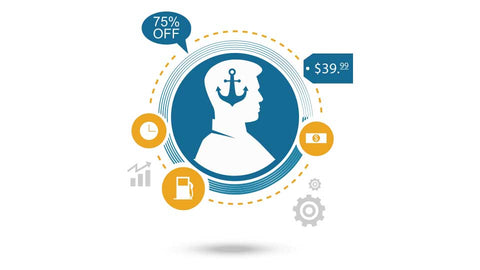Communicating the right way

How to explain new ideas and innovations
- Use an enabler to help the user understand that the concept is different from the others
- Biases are likely to either hinder or help your innovation. By knowing the shortcuts the mind is likely to take you can create a message that reaches the intended users
- The fear of loss can hinder adoption and acceptance. Remember that we are loss averse when formulating your message.
- Create a story and a “why”. A motive will make it easier for people to trust you and stories are proven to make people remember and identify with your message.
So you have a novel idea. You want to make sure that it catches the attention of the people who really need to try it out and have them try it. It seems like a quite straightforward thing, but in a world where the average Joe has an attention span of 8 seconds and 40% of users will abandon a webpage if it takes more than 3 seconds to load, it can be hard. Coming up with a new idea or concept is usually much easier than to actually convince someone to adopt or try it.
However, as long as we live, we learn, and there are a few rules that everyone should look at when trying to introduce something new.
1. Use Enablers to Show That You Are Different

Educating the users is essential. In an article about the failure of Crystal Pepsi, University of Alberta marketing professor Kyle Murray, brings up some of the biggest hurdles to winning the hearts and minds of customers when introducing a new concept to a crowd. In the case of Crystal Pepsi there was no explanation for why the product had been made transparent/clear and no effort to educate. The product was obviously different without an obvious reason why and customers shunned it.
The reverse can also be problematic. Without a clear way to separate a new innovation from older versions of a product can also cause customers to have second thoughts about buying it. One example is the reaction consumers had to vitamin enriched coffee which, when sold together with regular coffee and with a regular color, was viewed much less favorably, compared to when it was sold together with regular coffee and had been colored green. Professor Murray explains how the color makes sense as an enabler:
“Basically, people tell themselves that this is a different coffee subtype. It doesn’t replace or maybe even directly compare to regular coffee; it is a category of its own, related to regular coffee but also quite distinct.”
To communicate the advantages of new and different products it can be of great help to introduce enablers. The green color in the vitamin enriched coffee helps consumers understand that it is a different category of products. Likewise, when your products have a feature that makes them different from other products in their categories, like Crystal Pepsi, make sure to have an explanation for that difference and be clear with why this is an improvement.
2. Know the Biases
Nobel prize winner Daniel Kahneman and his research partner Amos Twersky were pioneers in discovering and naming different biases and heuristics, mental shortcuts that can ease the cognitive load when making decisions (Here’s a nice infographic on biases if you are interested in knowing more). We humans have a number of cognitive biases and some of these mental shortcuts and simplification also pose a hurdle to adopting new beliefs and accepting new innovations.

One example would be the backfire effect, the effect that, when deeply held beliefs and values are questioned, we humans tend to react as if we are under attack. (for a longer detailed explanation you can look at this excellent webcomic by the Oatmeal). The backfire effect means that when something we deeply believe is questioned we can react as if we are personally under attack. Instead of accepting evidence does not support our beliefs we have a tendency to double down and aggressively deny it.
There are several other mental shortcuts that humans tend to take that can stop us from communicating new knowledge and information efficiently. “The Curse of Knowledge” heuristic means that we tend to assume that everyone have the same knowledge base as we do and don’t give adequate explanations to potential users.

The “Anchoring effect” is the preference to use any kind of information received in negotiations and to compare figures even if they are irrelevant. Duke University professor Dan Ariely used anchoring when creating a magazine subscription offer with three different categories: Web $59, Print $125, and Print & Web $125. The print offer was only put there as a decoy and the comparison between the print only and the print & web offers assured that as many as 84% of the test group picked the print & web offer. So why is anchoring important to remember? The main answer is that even if you have a product that you would consider to be new, customers will unconsciously use references to similar products when they make their decision and you need to take the associations they make into account.
There are numerous other effects that springs into action when the mind encounters novelty that you should think about when introducing a new concept.
For example “The reactance effect” can be relevant as people have a tendency to want to do the opposite of what someone tells them, and “The Sunk Cost Fallacy” can lead you to pursue something that isn’t working. Knowing biases and how the human mind reacts to novelties will help you shape a message that can reach further.
3. Understand the Pain of Loss

In his book “Thinking, Fast and Slow” the above mentioned Daniel Kahneman, dives deep into the human mind and reminds us of something that is easy to forget: The human mind hates losing much more than it likes winning. We hate it so much that it’s common to place about twice as much value on avoiding a loss as on achieving a similar gain. The concept is called loss aversion and was part of explaining “the endowment effect”. The endowment effect means that we place a higher value on something we ourselves own. As an example, if someone puts just as much value on one more vacation day and on a salary increase of $150 and is given either of the two, the endowment effect says that they will tend to develop a preference for the benefit they have been given.
When trying to get someone to use a new innovation or adopt a new idea, remember that they will usually give up on something or take a risk in the form of abandoning a substitute. If you know what your intended users are giving up, you can better explain the arguments for adoption to counter the fears of loss they might have. Formulate your message so that they know what they would stand to lose from sitting still.
The mind processes numbers differently. Decimals are more difficult to process compared to numbers that are easy to visualize. Kahneman mentions a study where people who saw information about “a disease that kills 1286 people out of every 10,000” was viewed it as more dangerous than the people who was informed that “a disease that kills 24.14% of the population” in spite of the second example being almost twice as deadly. When describing what you want to say, use numbers that are easy to visualize to make sure the audience can understand and compare the difference in a meaningful way.
4. Tell a story around the innovation to create familiarity and a motive
Venturing into the unknown is scary and even more so when a good reason for why this should be done is lacking. Trying a new kind of cola is not the same kind of unfamiliar as buying a new car or moving to another continent but no matter how small a decision, there is always a cost-benefit analysis when someone decides if an invention is worth trying out. The unfamiliar have a potential to scare and we are creatures who want a motive for actions. When someone reacts to everyday situations in an erratic way they are perceived as crazy and in a similar way we want to know the identity and drive behind businesses as well. A story can not only counter that fear but even create the same feelings as the character in the story
Researcher Paul J. Zak describes the phenomenon in an article in Harvard Business Review:
"We discovered that, in order to motivate a desire to help others, a story must first sustain attention – a scarce resource in the brain – by developing tension during the narrative. If the story is able to create that tension then it is likely that attentive viewers/listeners will come to share the emotions of the characters in it, and after it ends, likely to continue mimicking the feelings and behaviors of those characters."
Instead of just putting your innovation out there to speak for itself you should provide people with a founding mythology.
Simon Sinek describes how to tell a story and to lead people to a vision in one of the most watched TED talks of all time, How Great Leaders Inspire Action. Sinek, speaks of a common mistake that we make when we want to spread an idea, that we start with “the What” instead of “the Why”. The “What” is the product, the service, the substance. Everyone knows their “What” and can communicate it. However, the why is not something that will inspire great action. Sinek proposes that we should start with the what why because “people don’t buy what you do, they buy why you do it”. We are all emotional creatures and many of your potential customers need to see a motive and a reason to trust you before they adopt your vision.
5. Consider this
So to sum it up:
When introducing a new idea make sure to consider the following four things to make the introduction smoother:
- Can you use an enabler to help the user understand that the concept is different from the other concepts on the market?
- What biases are likely to hinder or help your innovation? By knowing the shortcuts the mind is likely to encounter you can create a message that reaches the intended users without scaring them away.
- What does your intended user fear they might lose by trying the new idea? What can you tell them they might lose by not moving? Remember that we are loss averse when formulating your message.
- Does your innovation have a story and a “why”? Without a motive it will be harder for people to trust you and stories are proven to make people remember and identify with your message and brand.
Have you discovered any good tricks to communicate new ideas and to break through the noise and get heard? Please send us a message.
If you like this post and want to get more like it you can sign up for our newsletter at the bottom of the page.

